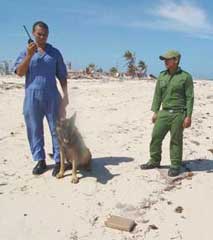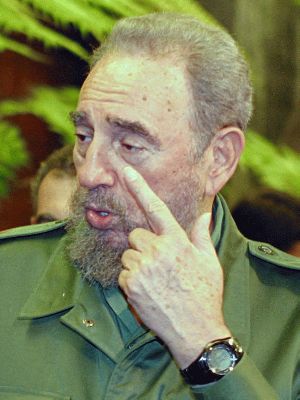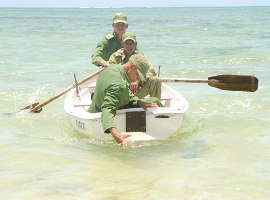Cuba and the International Illicit Drug Trade
May 3, 2012 by dykerr
In many ways, Cuba would seem to be a prime location for the international illicit narcotics trade. Situated between Latin America and the United States, Cuba could serve as a an important crossroads for traffickers, and the flourishing tourist economy based in part on an image of tropical hedonism could provide an ideal market for drugs within the country. I wondered if these black market potentialities were being realized in Cuba, in part because I saw little to no evidence that they were during the two weeks we spent in the country. What follows is information on Cuba’s drug policy, in terms of both domestic and foreign policy.
One of the first issues when exploring the drug trade in Cuba is the relative lack of information. The Cuban government is at loath to publish significant information on drug use within the country, and most reports are based on high-profile cases in which large quantities of drugs are seized by Cuban authorities. The assumed rationale behind this official silence is twofold: the Cuban government seeks to downplay the presence of a drug trade within the country’s borders, and highlight the efforts of the government to crack down on international traffickers.
Within Cuba, punishments for possession and distribution of drugs are notably harsh. The maximum penalties for drug dealing in Cuba range from twenty years to life in prison, and law enforcement reserves the right to search a seize any property suspected of harboring drugs. In 2008, over 1,800 people were tried in the country on distribution charges (3). These measures are coupled with intensive use-prevention education, exposing the dangers of drugs. Fidel Castro has stated that drugs are a “mortal venom for our youth and people,” (1) and this sentiment is widely echoed in the populace. When I brought up the subject of drug use on the island with our tour guide Joel, he replied that drugs are “dangerous” and therefore rarely used on the island. There are also extensive rehabilitation clinics and services in Cuba, designed to help get Cubans already addicted to drugs off the stuff for good.
Cuba recognizes its geographical location as being ideal for smugglers, and therefore keeps a close watch on its coastlines for signs of illicit activity by sea. Dozens of dropped parcels of drugs (called recalos) wash up on Cuban shores every year, to be collected by the authorities or other groups like the CDR that regularly patrol prime drop points. The government reports that it seized about 59 tons of illicit substances between 1997 and 2008, mostly marijuana and hashish from Jamaica and cocaine from Columbia (3).
The government also works with 32 other countries, including Great Britain and fellow Caribbean nations, in an effort to curb the trade internationally. These nations have given monetary support to the government to train airport officials in anti-drug measures, including an extensive canine drug-sniffing course (1). Notably, the U.S. is not officially involved in these efforts, although most of the drugs shipped through Cuba are bound for a U.S. market. (There is an unofficial accord with the U.S. coast guard, however.) Clearly, an agreement between the two countries would be beneficial for both but, as in almost all cases in U.S.-Cuba relations, outdated political stances prevent the countries from working together. While Cuba has made many important and effective strides toward reducing drug trade and use in the country, further eradication efforts depend on U.S. assistance.
Sources:
1. http://www-rohan.sdsu.edu/faculty/rwinslow/namerica/cuba.html
2. http://www.unc.edu/depts/diplomat/item/2009/0709/comm/lee_cuba.html
3. http://www.cbsnews.com/2100-202_162-676125.html
Leave a Reply
You must be logged in to post a comment.


